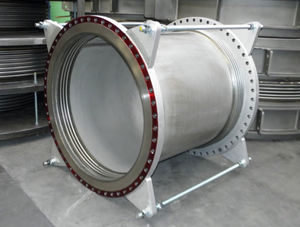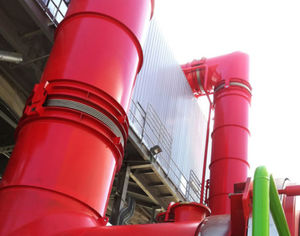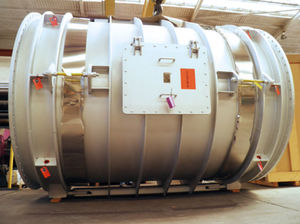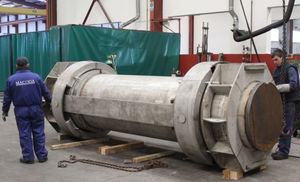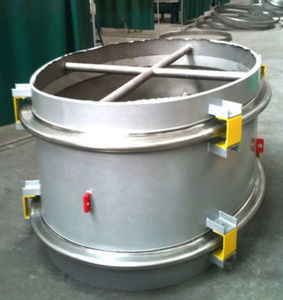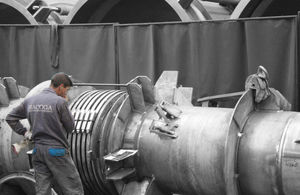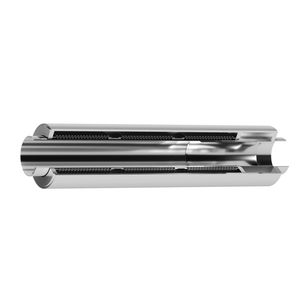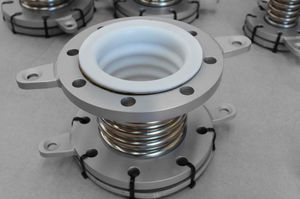
Metal pipe expansion joint MFFroundflangefor pipes




Add to favorites
Compare this product
Characteristics
- Material
- metal
- Configuration
- round
- Installation system
- flange
- Applications
- for pipes
Description
A special case of the Thick Wall type, Flanged and Flued expansion joints are made in two halves from flat annular plates. The outside edges of the plates are formed in one direction (flanged), and the inside edges are formed in the other direction (flued). The two halves are welded together and then welded into the heat exchanger shell. Because of the higher wall thickness, this type of expansion joint is rugged and the most durable from the standpoint of abuse, but it has the disadvantage of limited flexibility.
MACOGA MFF Expansion Joints are designed as per ASME VIII-1 mandatory Appendix 5 guidelines for the design of flanged and flued expansion joints and ASME Appendix 26 and EJMA that provide methods of calculating the stresses, fatigue life and spring rate.
This type of expansion joint is rugged and the most durable from the standpoint of abuse, but it has the disadvantage of limited flexibility.
The most common application for flanged and flued Expansion Joints is heat exchangers and large diameter piping systems.
MFF Expansion joints are promising for accommodating differential thermal expansion of heat exchanger shells, pressure vessels, and pipelines carrying high-temperature fluids. Differences in the axial expansion of the shell and the tube bundle due to high mean metal temperature differentials warrant incorporation of expansion joints in heat exchangers. This is particularly true for fixed tube-sheet exchangers.
Catalogs
No catalogs are available for this product.
See all of Macoga, S.A‘s catalogsRelated Searches
- Pipe expansion joint
- Round pipe expansion joint
- Flange pipe expansion joint
- Rubber pipe expansion joint
- Metal pipe expansion joint
- Pipe pipe expansion joint
- Weld-on pipe expansion joint
- Steel pipe expansion joint
- Universal pipe expansion joint
- Heating pipe expansion joint
- Screw-in pipe expansion joint
- Gas pipe expansion joint
- Rectangular pipe expansion joint
- Flexible pipe expansion joint
- PTFE pipe expansion joint
- Double pipe expansion joint
- Square pipe expansion joint
- Hinged pipe expansion joint
- Threaded pipe expansion joint
- Vacuum pipe expansion joint
*Prices are pre-tax. They exclude delivery charges and customs duties and do not include additional charges for installation or activation options. Prices are indicative only and may vary by country, with changes to the cost of raw materials and exchange rates.





